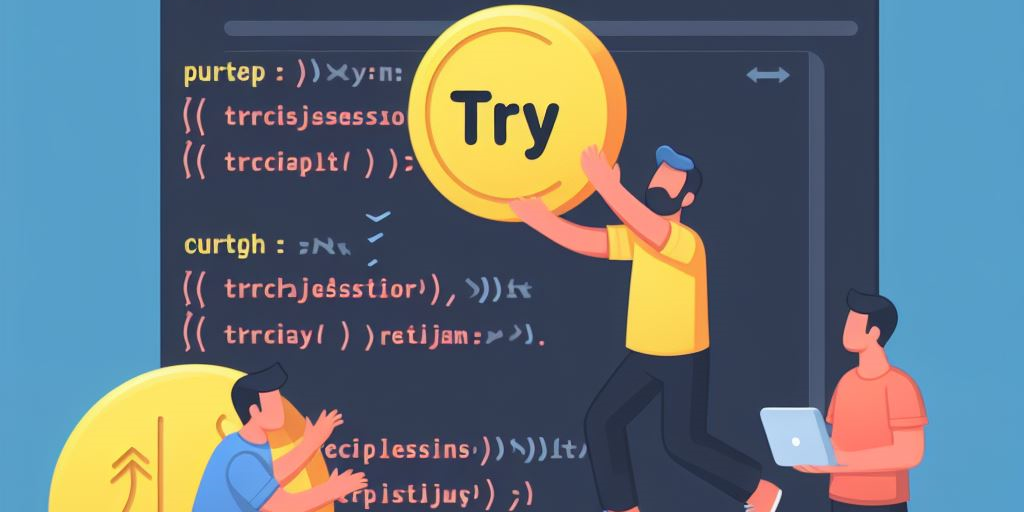Exception handling in PHP is a mechanism that allows you to deal with unexpected conditions (like runtime errors) in a program's flow in a clean and manageable way. It uses the try, catch, and throw statements to handle exceptions. To write robust, error-resistant applications, it is crucial to understand and correctly implement exception handling in PHP.
How Exception Handling in PHP Works
Throwing an Exception in PHP
When an exceptional condition arises, you can throw an exception. This stops the normal flow of the program and transfers control to the first matching catch block.
function divide($dividend, $divisor) {
if ($divisor == 0) {
throw new Exception("Division by zero.");
}
return $dividend / $divisor;
}
In this example, an exception is thrown if the divisor is zero.
Catching an Exception in PHP
You can catch an exception using a try-catch block. The code inside the try block is the code that might throw an exception, and the catch block is where you handle the exception.
try {
echo divide(10, 0);
} catch (Exception $e) {
echo 'Caught exception: ', $e->getMessage(), "\n";
}Here, the divide function might throw an exception, so it's called inside a try block. The catch block then handles the exception and prints the error message.
Finally Block (Optional)
A finally block can be used after catch blocks. It will be executed regardless of whether an exception was thrown or caught. This is useful for cleaning up resources, like closing files or database connections.
try {
// Code that may throw an exception
} catch (Exception $e) {
// Handle exception
} finally {
// Code that will run regardless of whether an exception was thrown or not
}Key Points
- An exception can be any object that extends the Exception class. PHP also provides several built-in exception classes for different purposes.
- You can use multiple catch blocks to catch different types of exceptions.
- Throwing an exception within a catch block will transfer control to the next catch block that matches its type, if available.
- If an exception is not caught (i.e., there is no matching catch block), it will cause a fatal error and the program will terminate.
Example
Here's a more detailed example:
function checkNum($number) {
if($number > 1) {
throw new Exception("Value must be 1 or below");
}
return true;
}
try {
checkNum(2);
echo 'If you see this, the number is 1 or below';
} catch (Exception $e) {
echo 'Caught exception: ' . $e->getMessage();
}In this example, the function checkNum throws an exception if the number is greater than 1. The try-catch block is used to handle this exception.
Frequently Asked Questions
PHP exception handling often raises several common questions among developers, especially those new to the concept. Here are some frequently asked questions and their solutions:
What is the Difference Between Exceptions and Errors in PHP?
Exceptions
Exceptions are used for exceptional conditions that a script should catch and handle. They are typically used for non-fatal, user-defined errors. In PHP, exceptions are objects of the `Exception` class or a subclass thereof.
Errors
In PHP 7 and later, errors represent serious problems that are not intended to be handled by the script. For example, Error class is used for internal PHP errors.
How Do You Create a Custom Exception?
To create a custom exception, you extend the built-in `Exception` class:
class MyCustomException extends Exception {
// Custom functionality or properties
}
try {
// Code that may throw an exception
throw new MyCustomException("Custom error message");
} catch (MyCustomException $e) {
echo $e->getMessage();
}Can One Try Block Have Multiple Catch Blocks?
Yes, you can have multiple catch blocks for a single try block to handle different types of exceptions:
try {
// Code
} catch (FirstExceptionType $e) {
// Handle first type of exception
} catch (SecondExceptionType $e) {
// Handle second type of exception
}What is the Purpose of the Finally Block?
A finally block is executed after the try and catch blocks, regardless of whether an exception was thrown or caught. It's often used for cleanup activities:
try {
// Code that might throw an exception
} catch (Exception $e) {
// Handle exception
} finally {
// Code that always needs to run, like closing resources
}How Do You Rethrow an Exception?
You can rethrow an exception within a catch block to allow it to be handled further up the call stack:
try {
// Code that might throw an exception
} catch (Exception $e) {
// Do some error handling and then rethrow
throw $e;
}Can You Catch Multiple Exception Types in a Single Catch Block?
From PHP 7.1 onwards, you can catch multiple exception types in a single catch block using a pipe (|) to separate them:
try {
// Code
} catch (FirstExceptionType | SecondExceptionType $e) {
// Handle multiple types of exceptions
}How Do You Log Exceptions?
Logging exceptions is a common practice, often achieved using a logging library or simple file operations:
catch (Exception $e) {
error_log($e->getMessage()); // Log to PHP error log
}How Do Nested Try-Catch Blocks Work?
You can nest try-catch blocks within other try-catch blocks. An inner try-catch block can handle exceptions specifically for a code segment, while an outer block can catch exceptions that the inner block does not handle.
Is It a Good Practice to Use Exceptions for Flow Control?
Using exceptions for regular flow control is generally considered a bad practice. Exceptions should be reserved for truly exceptional conditions that the normal flow is not expected to handle.
